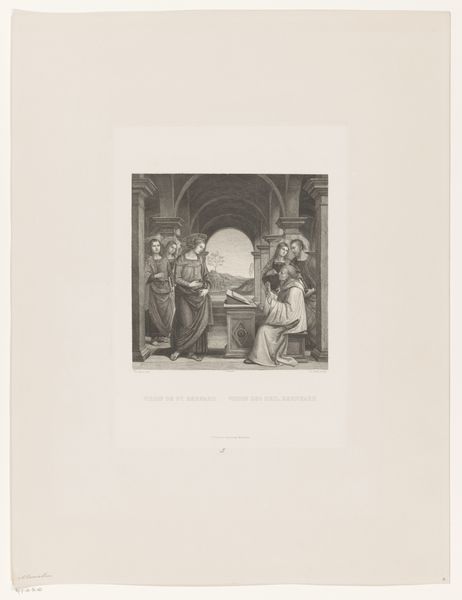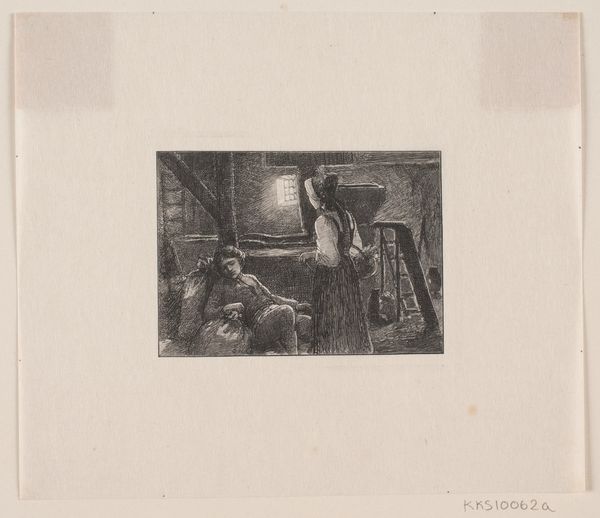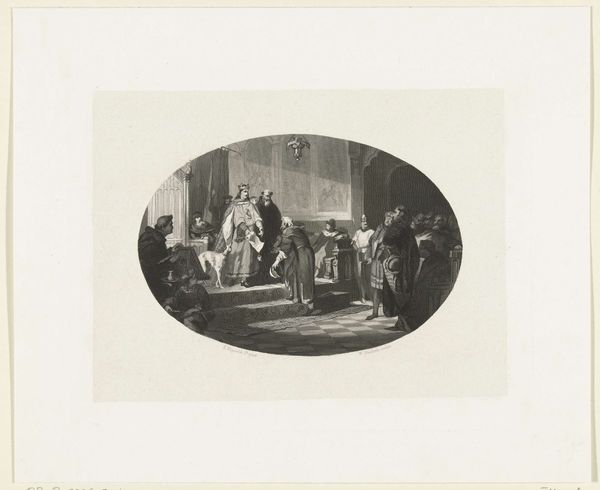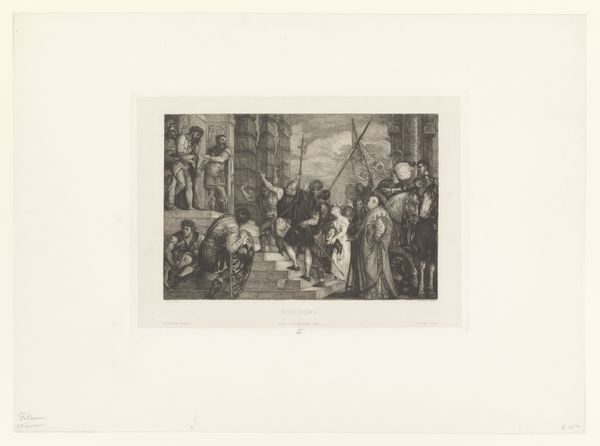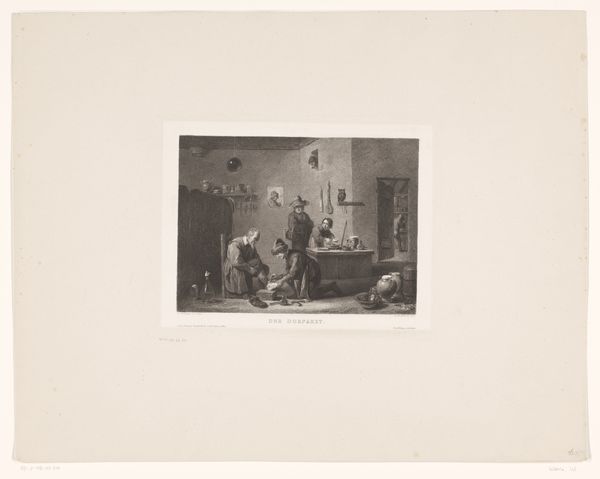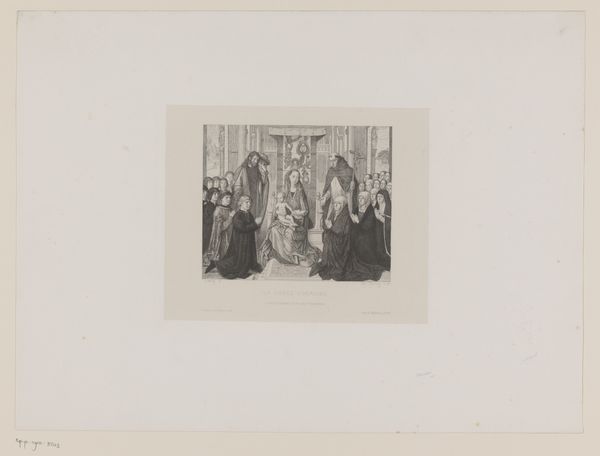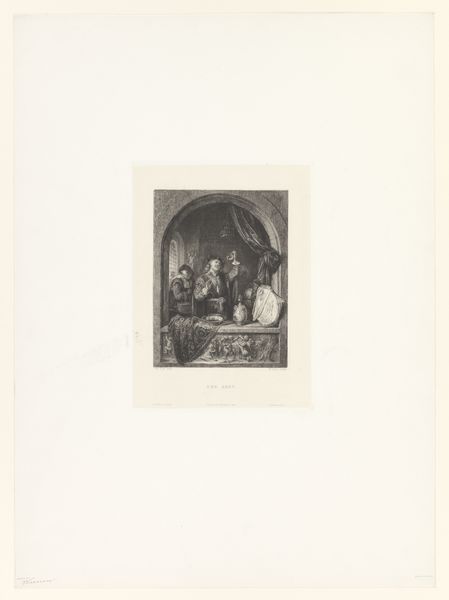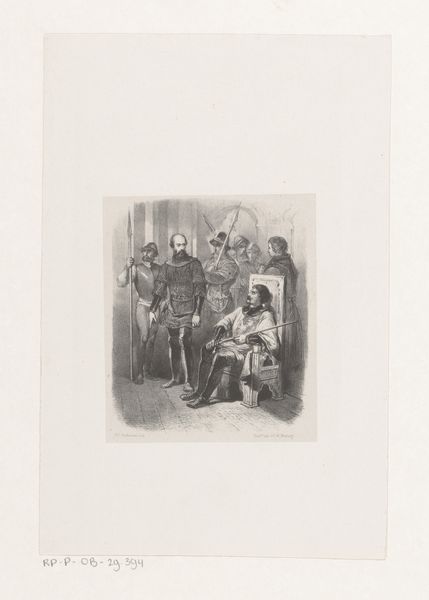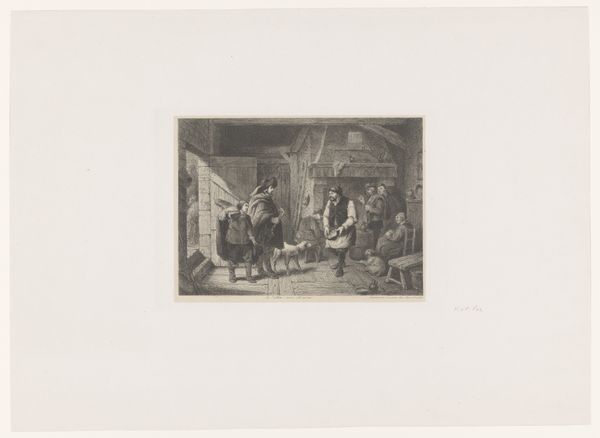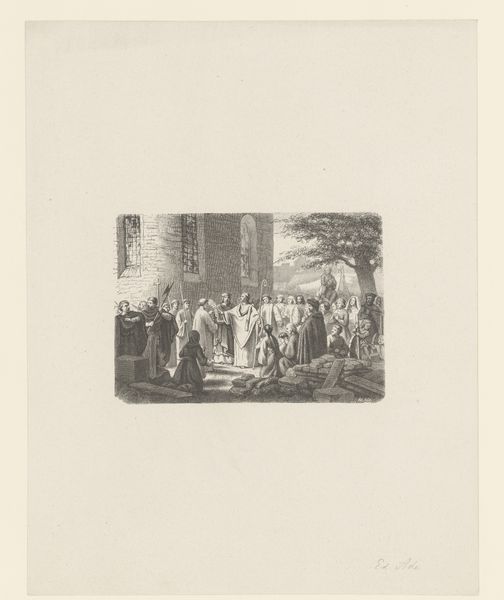
print, etching
#
portrait
#
narrative-art
# print
#
etching
#
figuration
#
islamic-art
#
genre-painting
Dimensions: height 88 mm, width 143 mm
Copyright: Rijks Museum: Open Domain
Curator: Here, we have Antoine Alphée Piaud's etching from 1859, "Jews in the Synagogue." Editor: It’s funny, seeing this monochrome image I initially sense something subdued. The way those figures cluster gives a distinct impression of secrets being shared. Curator: Well, etching as a medium often lends itself to such intricate detailing, which emphasizes the intimacy and candidness you noticed. It almost feels like we’re eavesdropping on a private moment, wouldn’t you agree? Editor: Yes, it is almost voyeuristic. It brings a level of narrative depth, doesn’t it? It really plays with ideas of insiders and outsiders. I wonder if there is some structural symbolism there too, with the composition directing us towards that central huddle. What kind of stories do you imagine Piaud was trying to weave here? Curator: Given Piaud's interest in genre scenes and figuration, it is my educated guess that he captured the textures of daily life but with a certain remove and curiosity. Consider that etching allowed him to reproduce images widely, and this synagogue scene becomes available for scrutiny, appreciation, or even prejudice. Editor: Interesting… It does invite the viewer into a dialogue, doesn’t it? Even though this print is an example of genre painting with clear elements of portraiture and touches of what might today be deemed "islamic-art," that doesn't pin down what this is 'about'–its historical layering is incredible. Curator: Indeed! Every detail invites reflection. It is difficult to discern, even as it presents itself quite boldly, wouldn't you say? Editor: Absolutely. Piaud gives us glimpses into the 19th century. A shared moment made permanently ours to view.
Comments
No comments
Be the first to comment and join the conversation on the ultimate creative platform.

